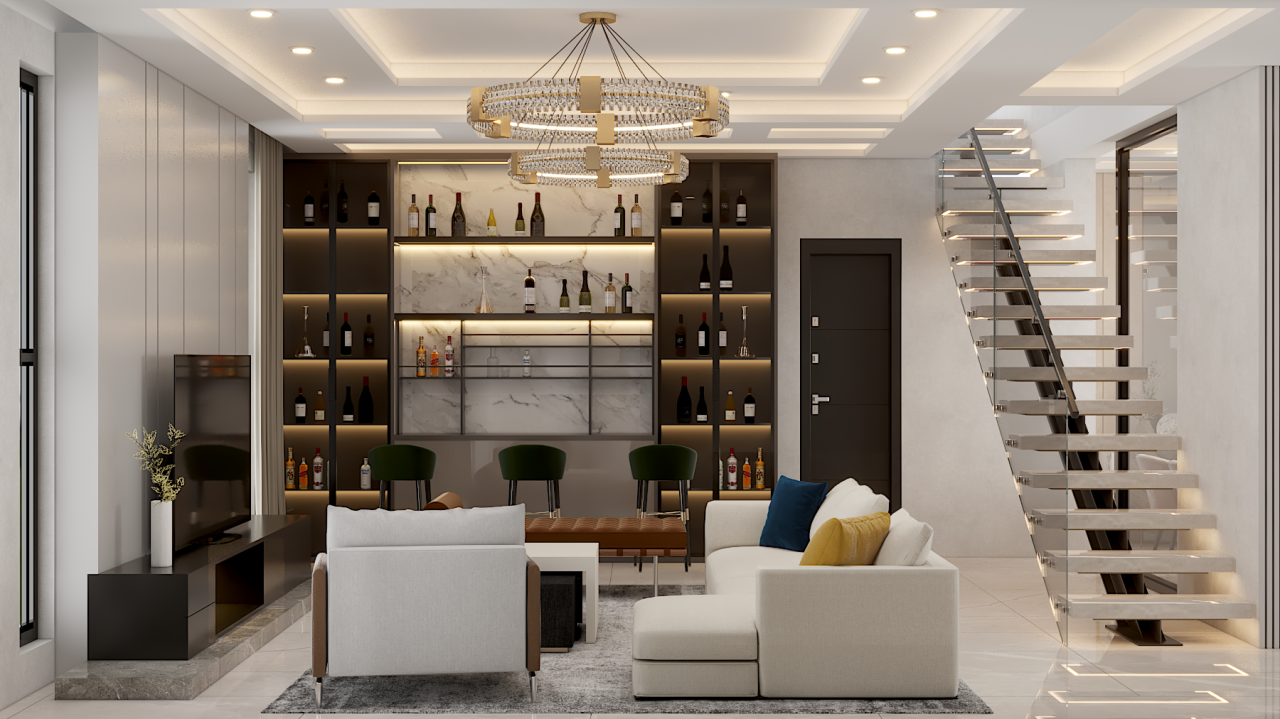Luxury interior design is the pinnacle of sophistication, seamlessly combining elegance, innovation, and functionality to create a unique and functional space that is not just beautiful but also transformative. It’s not just about the furniture or the color palette – it’s about creating an atmosphere that tells a story and reflects the personality and aspirations of those who inhabit it. From bespoke furnishings to cutting-edge materials, high-end interiors elevate everyday living into an extraordinary experience.
Let’s explore how luxury interior design achieves this magic, from the choice of materials to the meticulous attention to detail, and why advanced technical ceramics are playing a growing role in this glamorous field.
The Foundations of Luxury: Materials That Make a Statement
At the heart of any high-end design lies the selection of materials. Marble, hardwood, and silk have long been hallmarks of luxury interiors, but today’s designers are experimenting with innovative options to push boundaries. Each material is chosen not only for its beauty but also for its durability and unique characteristics.
For example, veined marble exudes timeless sophistication, while exotic woods like ebony or walnut create a sense of warmth and depth. Layering textures, such as velvet upholstery paired with sleek metallic accents, adds dimension to a space, giving it that distinct touch of opulence.
Modern luxury interiors often blend tradition with innovation, incorporating contemporary materials alongside classics to achieve a design that feels both timeless and forward-thinking.
The Role of Advanced Technical Ceramics in Interior Design
One of the most fascinating advancements in modern interior design is the incorporation of advanced technical ceramics. These materials, often developed by specialized companies like those featured on the wunder-mold website, are prized not only for their striking aesthetic qualities but also for their remarkable functional benefits. Unlike traditional ceramics, which are primarily decorative, advanced ceramics offer superior durability, resistance to wear, and even thermal stability, making them ideal for high-end spaces.
In luxury interiors, technical ceramics are used for everything from statement wall panels to flooring and countertops. Their versatility allows them to mimic the look of natural stone or other premium materials while offering enhanced performance. For instance, ceramic tiles with a metallic or marbleized finish bring an avant-garde touch to interiors without compromising on practicality.
What’s more, advanced ceramics can contribute to sustainable design. Many of these materials are manufactured using eco-friendly processes, offering a green alternative for homeowners who want their luxury spaces to align with their environmental values.
Bespoke Furnishings: Craftsmanship at Its Finest
Custom furniture is a cornerstone of high-end interior design, where every detail is tailored to perfection. Artisans and designers work together to create pieces that are not only functional but also works of art in their own right. Whether it’s a hand-carved dining table or a one-of-a-kind chandelier, bespoke furnishings are the ultimate expression of luxury.
Investing in custom pieces allows homeowners to infuse their personal style into their spaces, ensuring the design feels authentic and unique. It’s this level of personalization that sets high-end interiors apart, turning homes into sanctuaries of creativity and comfort.
Lighting That Tells a Story
Lighting in luxury interiors is far more than a necessity, it’s an art form. Thoughtfully placed fixtures create ambiance, highlight architectural features, and elevate the overall aesthetic of a room. From cascading crystal chandeliers to minimalist LED strips, the options are endless.
Layered lighting is a popular technique in high-end design, combining ambient, task, and accent lighting to create depth and versatility. For instance, dimmable wall sconces can set a relaxing mood, while under-cabinet lighting in a kitchen adds both functionality and flair.
Color Palettes That Define Elegance
Color plays a vital role in setting the tone of a luxurious interior. Neutral palettes, such as soft grays, creams, and taupes, remain a classic choice, but bold jewel tones like emerald green or sapphire blue are increasingly making their way into high-end designs. These rich hues, often paired with metallic accents, create a sense of drama and sophistication.
The key is balance, too much color can overwhelm, while too little can feel uninspired. Designers expertly layer shades and textures to ensure the space feels cohesive yet dynamic.
Did you know that some advanced technical ceramics used in interior design are derived from materials originally developed for aerospace applications? Their incredible strength and heat resistance make them perfect for luxury kitchens and bathrooms, where performance is just as important as aesthetics.
These innovative ceramics can even incorporate nanotechnology, offering self-cleaning or anti-bacterial surfaces, a perfect blend of science and art that defines the future of high-end living.
Luxury Redefined: The Importance of Details
Ultimately, luxury interior design is all about the details. It’s the flawless stitching on a leather sofa, the precise alignment of tiles, and the subtle interplay of textures that elevate a space from ordinary to extraordinary. Even seemingly small choices, like the type of hardware on cabinetry or the finish on a light fixture, contribute to the overall impression of sophistication.
In the world of high-end interiors, every decision matters, because luxury isn’t just seen – it’s felt. It’s the experience of walking into a room and instantly sensing that everything, from the flooring to the ceiling, has been thoughtfully curated to perfection.
With the integration of advanced materials like technical ceramics and the timeless appeal of bespoke craftsmanship, luxury interior design continues to push boundaries, transforming homes into unparalleled works of art.
Also Read: Payroll Compliance 101: What Cannabis and Hemp Businesses Need to Know.





